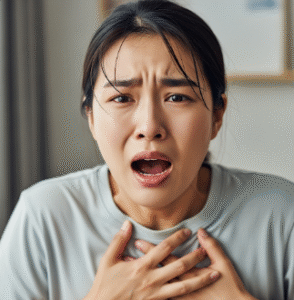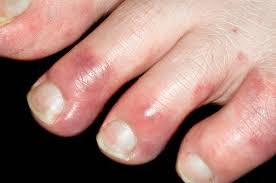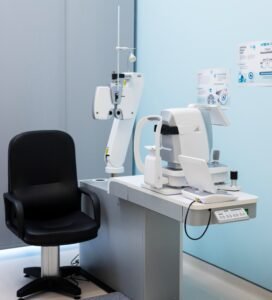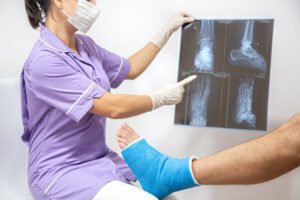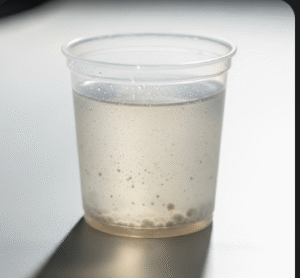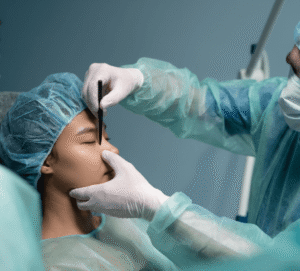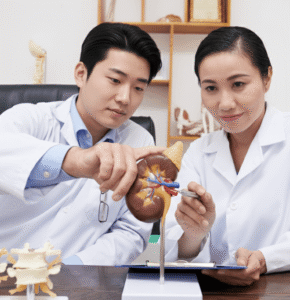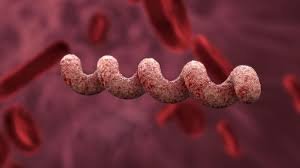➤ Overview
Sinus pressure is a common symptom resulting from inflammation or congestion of the sinus cavities, which are air-filled spaces within the skull surrounding the nose and eyes. This condition often causes a feeling of fullness, pain, or pressure in the face, particularly around the forehead, cheeks, and eyes.
In South Korea, sinus pressure is addressed by ENT specialists, allergists, and general practitioners, who use a combination of diagnostic imaging, medications, and procedural interventions to relieve symptoms and treat underlying causes. Proper management is essential to prevent chronic sinusitis, infections, or complications.
➤ Key Facts
→ Sinus pressure is often associated with sinusitis, colds, allergies, or nasal obstruction.
→ It can affect one or multiple sinus cavities.
→ Symptoms may worsen when bending forward or lying down.
→ Chronic sinus pressure can lead to headaches, fatigue, and sleep disturbances.
→ In Korea, treatment includes nasal sprays, medications, and advanced ENT procedures.
→ Diagnostic tools like CT scans or endoscopy help identify structural or infectious causes.
→ Early intervention improves comfort and reduces risk of complications.
➤ What is Sinus Pressure?
Sinus pressure occurs when the sinuses become blocked or inflamed, causing mucus and air to build up. This leads to a feeling of tightness or fullness in the facial area. Sinus pressure can be acute (short-term), often due to infections or allergies, or chronic (lasting more than 12 weeks), caused by persistent inflammation or structural issues.
The four pairs of sinus cavities—frontal, maxillary, ethmoid, and sphenoid—can each contribute to distinct pressure locations:
→ Frontal sinuses – Forehead pressure.
→ Maxillary sinuses – Cheek and upper jaw pressure.
→ Ethmoid sinuses – Between the eyes.
→ Sphenoid sinuses – Deep behind the eyes, causing headache or eye discomfort.
Korean ENT specialists evaluate sinus anatomy and function to identify the precise source of pressure for targeted treatment.
➤ What Symptoms are Related to Sinus Pressure?
Sinus pressure often presents with multiple concurrent symptoms:
→ Facial fullness or pain, typically near forehead, cheeks, or eyes.
→ Headaches that worsen when bending forward.
→ Nasal congestion or obstruction.
→ Postnasal drip, leading to throat irritation or cough.
→ Reduced sense of smell or taste.
→ Fever in cases of bacterial infection.
→ Fatigue and malaise, especially during acute sinusitis.
→ Swelling around the eyes or cheeks in severe cases.
➤ What Causes / Possible Causes?
Sinus pressure can arise from a variety of factors:
→ Viral infections – Common colds and flu.
→ Bacterial sinusitis – Secondary infection following viral illness.
→ Allergic reactions – Pollen, dust, mold, or pet dander.
→ Structural abnormalities – Deviated septum, nasal polyps, or narrow sinus openings.
→ Environmental irritants – Smoke, pollution, or chemical fumes.
→ Chronic medical conditions – Asthma, immune deficiencies, or cystic fibrosis.
→ Dental infections – Upper teeth infections can sometimes contribute to maxillary sinus pressure.
➤ When Should I See My Doctor?
Medical evaluation is necessary if sinus pressure is severe, persistent, or associated with other concerning symptoms:
→ Symptoms lasting more than 10 days without improvement.
→ Severe facial pain, swelling, or redness.
→ High fever or persistent nasal discharge that is yellow or green.
→ Recurring sinus pressure multiple times per year.
→ Vision changes, severe headaches, or neurological symptoms.
→ Chronic sinus pressure affecting sleep, work, or quality of life.
→ Suspected complications such as orbital or brain infections.
➤ Care and Treatment
Treatment focuses on reducing inflammation, relieving congestion, and treating underlying causes:
→ Nasal saline irrigation – Helps clear mucus and allergens.
→ Decongestants – Oral or nasal sprays to reduce swelling.
→ Antihistamines – For allergy-related sinus pressure.
→ Pain relievers – NSAIDs to reduce headache and facial discomfort.
→ Antibiotics – Only if bacterial infection is confirmed.
→ Steam inhalation – Moistens nasal passages and eases discomfort.
→ Lifestyle modifications – Hydration, avoiding allergens, and using humidifiers.
→ Surgical intervention – For chronic sinusitis, nasal polyps, or structural abnormalities.
➤ Treatment Options in Korea
South Korea offers advanced ENT care for sinus pressure, combining diagnostics, medications, and minimally invasive procedures:
Diagnosis in Korea
→ Endoscopic nasal examination by ENT specialists.
→ CT scans to assess sinus structure and identify blockages.
→ Allergy testing to detect contributing triggers.
Medical Treatments in Korea
→ Prescription decongestants, antihistamines, or corticosteroid nasal sprays.
→ Antibiotic therapy if bacterial sinus infection is present.
→ Pain management using NSAIDs or analgesics.
Advanced Therapies in Korea
→ Functional endoscopic sinus surgery (FESS) for chronic or structural issues.
→ Balloon sinuplasty to open blocked sinus passages.
→ Allergen immunotherapy for long-term relief in allergy-related cases.
Rehabilitation & Support in Korea
→ Guidance on nasal hygiene, sinus irrigation, and lifestyle adjustments.
→ Follow-up care to monitor recovery and prevent recurrence.
→ Integrative approach combining Western medicine and Korean wellness practices to support overall sinus health.


